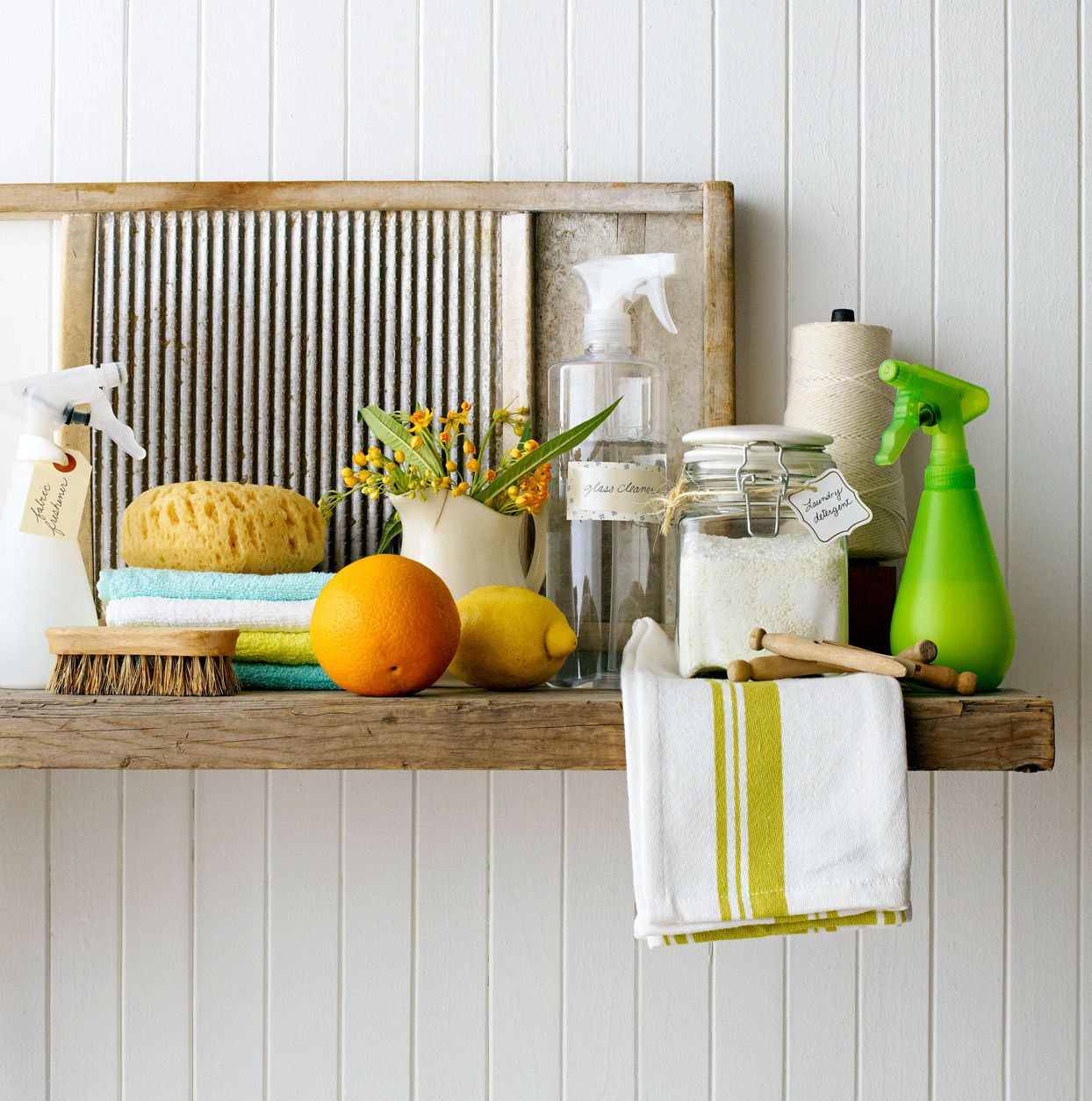If you’ve spent any time on Cleantok (or basically anywhere online), you’ve probably noticed that, when it comes to surface cleaning, many cleaning products that contain harsh chemical ingredients are being swapped out for homemade cleaners with more gentle ingredients. Baking soda, rubbing alcohol, vinegar, lemon juice, and the like are some of the key ingredients in these cleaners—but when it comes to killing germs via sanitization or disinfection, are these DIY cleaners as effective as the store-bought cleaners with more powerful ingredients? We sought out some expert advice to learn more.
Jill Grimes, M.D., a family physician and author, outlines one key distinction that can determine whether a product is actually effective. “It’s important to understand the difference of disinfecting versus cleaning,” Grimes says. Cleaning refers to using soaps, sponges, or cloths to physically remove dirt and debris to make the surface appear clean. She says this process likely decreases the number of germs in the area but doesn’t necessarily eliminate them completely. On the other hand, disinfecting means using effective cleaners known to actually destroy viruses and bacteria, she says.
According to the Centers for Disease Control and Prevention (CDC), most commercial household disinfectants, such as Clorox and Lysol, provide a solid defense against viruses and bacteria. When shopping for cleaners, refer to resources like the Environmental Protection Agency’s list of registered disinfectants, which list products that meet certain criteria for eliminating bacteria, fungi, and/or viruses. (The EPA even identifies antimicrobial products approved for use against specific dangerous pathogens.)
Still, there are some alternative homemade cleaning solutions that can be used to kill viruses and bacteria, when they include the right ingredients.
More DIY Cleaner Ingredients and How They Work
Before you swap in a DIY cleaner for a store-bought disinfectant, here’s what you should know about which ingredients are thought to be most effective.
Alcohol
More than a first-aid kit supply, rubbing alcohol can also be used as a disinfectant around the house. You can dilute alcohol with water, but the CDC recommends a solution that’s at least 70% alcohol for the most effective germ-killing capabilities. Avoid using alcohol solutions on painted, lacquered, or varnished surfaces (including wood), as it could damage the finish. Alcohol is highly flammable, so keep it away from heat sources, and always work in a well-ventilated area while cleaning.
Bleach
A diluted bleach solution is another at-home alternative recommended by the CDC. Create a solution by mixing ⅓ cup bleach with one gallon of water, and use it to clean hard surfaces such as sinks, countertops, toilets, floors, and kitchen appliance handles. When working with bleach, make sure the area is well-ventilated by opening a window or turning on an exhaust fan. Protect your skin by wearing rubber gloves, and dispose of the gloves (or wash your hands with soap and water while still wearing them) immediately after cleaning surfaces.
Never mix bleach with ammonia or other cleaners; this can create a harmful gas.
Essential Oils
Although tea tree oil has some antibacterial and antiviral properties, it is not approved as a sanitizing or disinfecting product. You can remove dirt and grime from surfaces with solutions containing essential oils, but be sure to follow up with an approved disinfectant for the most effective clean.
Hydrogen Peroxide
Household hydrogen peroxide (usually a 3% concentration) can be used to kill a variety of microorganisms, including some viruses, bacteria, and fungi, according to the CDC. Hydrogen peroxide can be effective against pathogens like the rhinovirus, which causes the common cold. Use 3% hydrogen peroxide straight from the bottle or dilute it to a 0.5% concentration by combining one part hydrogen peroxide with five parts water. Leave the solution on surfaces for at least one minute (longer for more diluted solutions) before wiping off or letting dry completely.
Vinegar
It works great for cutting through soap scum in your shower, but does vinegar kill germs and viruses? According to one study in the journal Infection Control and Hospital Epidemiology, vinegar is less effective against pathogens including bacteria and viruses when compared to cleaners like Lysol and Clorox. Only these commercial disinfectants, not the vinegar, were effective against viral pathogens in the test. It’s best to combine this cleaner with an additional disinfecting step for the most effective sanitizing. That said, if you’re just looking for a light surface clean, vinegar is still a great pick.
Whether you use DIY cleaners, gentle store-bought cleaners, or the same powerful disinfectants you’ve always used, always follow product instructions for safe and effective use, and disinfect high-touch surfaces regularly to help keep yourself and your family healthy.




